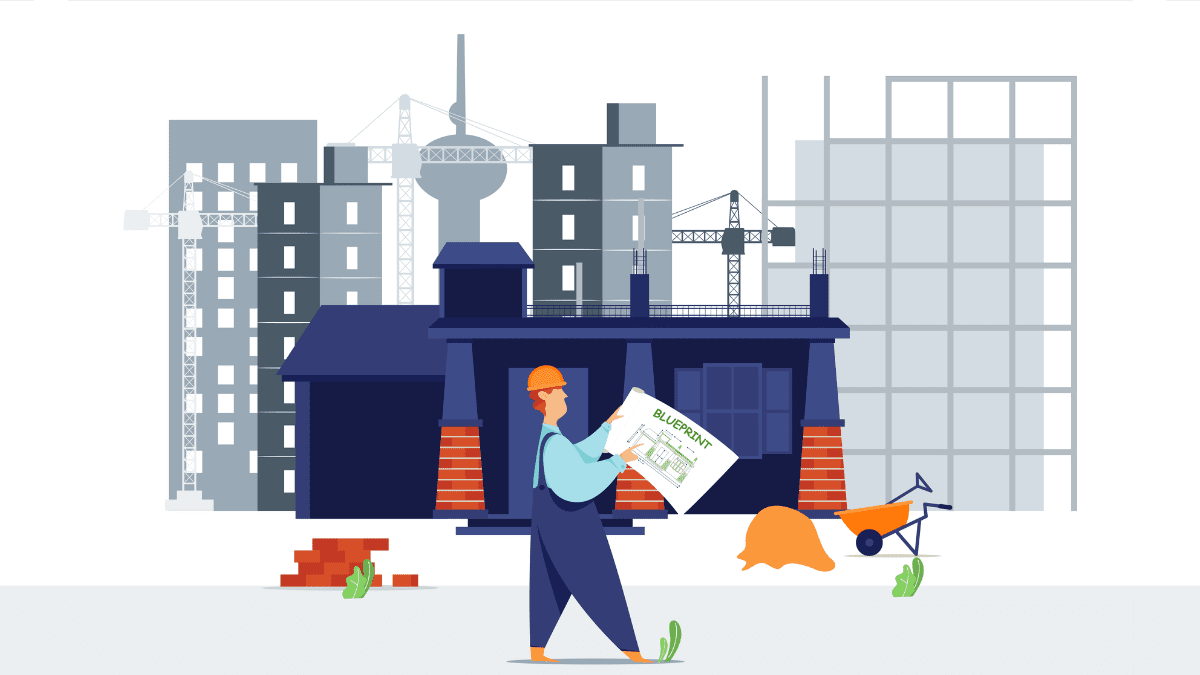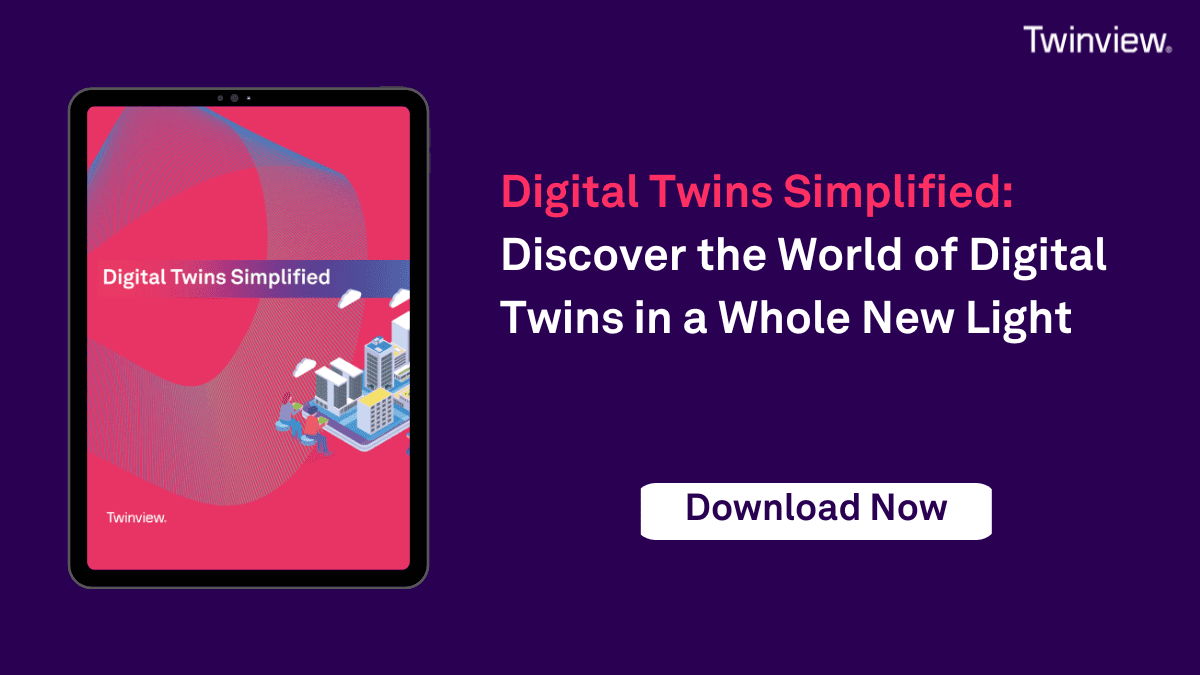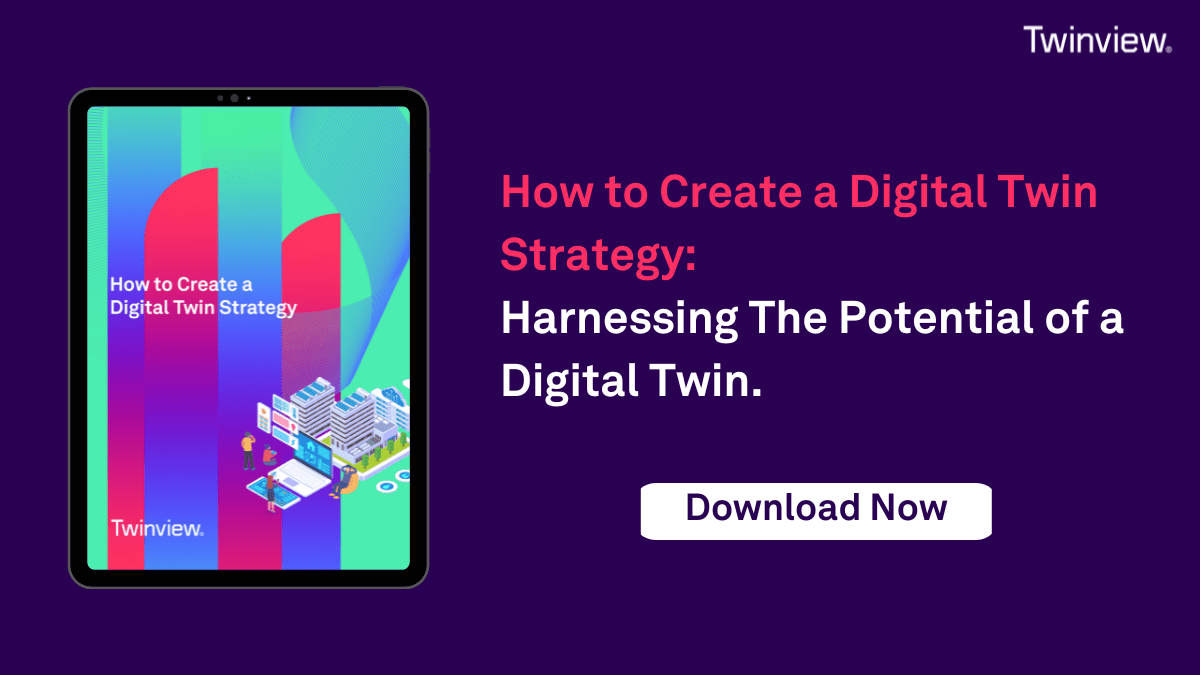31 Aug 2023 | Industry Insights
How to Get Digital Twin Ready

How to Get Digital Twin Ready
As technology advances, buildings continue to become more connected and intelligent than ever before, with the idea of a digital twin becoming more prevalent in the world of asset management. But what exactly is a digital twin, and how can asset owners ensure they are ready to implement one?
As a building owner or facilities team, taking control of your building at each stage of its lifecycle is crucial, and with digital twins like Twinview, you can do just that. These virtual replicas of physical assets provide a comprehensive view of your building's performance with real-time data insights, advanced monitoring, and navigational tools. By utilising these tools, you can drive efficiencies and increase your understanding of your building's needs, ultimately saving time and money in the process. The benefits of digital twins for the built environment are clear, and the use of this technology will continue to grow over the coming years.
While constructing a digital twin may seem daunting, particularly for those new to the technology, this article will break down the process of getting digital twin ready into bite-sized parts and highlight which of those practices many asset owners may already have in place. Furthermore, this article will also run through and identify the best times to implement a digital twin in relation to the RIBA Plan of Work.
Preparing for Success: Key Questions to Ask Yourself
From the outset, it is important to establish a vision for what you would like to achieve through the implementation of a digital twin. To fully leverage the advantages of a digital twin, asset owners should identify the requirements of their building and facilities teams, establish a robust governance structure and chart out the potential evolution of digital twin capabilities. By recognising your goals and identifying infrastructure readiness, financial capabilities, data preparedness and security posture early in the process, a digital twin can be delivered effectively and with greater efficiency.
Starting Your Digital Twin Journey
To prepare for integrating a digital twin, asset owners should gather all relevant building data and resources at their disposal. This will help in the creation of a 3D model, which is also known as the virtual counterpart. By doing this, asset owners can ensure that their digital twin accurately represents their physical asset both visually and on a granular level. Fortunately, the vast majority of asset owners possess valuable resources such as architectural drawings and BIM models, which can be easily uploaded, stored, and used to reflect the current condition of the building accurately.
The goal is to identify and collect data required to replicate your building and its internal systems.
The next step is to consolidate the data from already established devices. By doing so, you can utilise the asset feedback and operational data to increase the overall understanding of how assets have performed to date. Asset manuals, maintenance records, repair logs, IoT gathered reports, or, more simply, facility team Excel sheets all help feed what will become in-depth insights generated by the digital twin, further added to by existing building management systems (BMS) that can include access control, video surveillance, fire alarms, HVAC control, programmable lighting, and electric power management. In addition, by collating and organising their resources, asset owners can make better use of the secure repository offered by digital twins such as Twinview, meaning that everything is stored more productively in one place, removing the need for unorganised filing cabinets.
Prioritise Security and Data Protection from the Start
As digital twins rely on a large proportion of your building's data, cyber criminals may find this information appealing. Therefore, when planning your digital twin implementation, consider appropriate data security measures, such as data encryption, firewalls, and access controls, from the beginning of the process. This will ensure you protect sensitive information from unauthorised access.
The Secret to a Seamless Integration
The key to implementing a digital twin is to connect and integrate all relevant components- to join everything you have at your disposal together. However, this can also mean introducing new components that are instrumental in the creation of a fully functional digital twin for your building.
Twinview can help with this process by providing smaller modules, products, and features that align with the relevant stages of the RIBA Plan of Work and beyond.
From Preparation and Briefing to Use: Stage 1 to Stage 7
Property Developers and Contractors
As procurement improves, the relationship between client and design teams grows more complex. Specialist subcontractors now handle building design aspects, adding to the already intricate interface between construction and design teams. To compound things, modern construction methods are making this project relationship even more complicated, highlighting the need for a collaborative space for all key players.
Asset Owners and Operators
Teams during the operational stages of a building similarly depend on a mix of permanent on-site personnel, contractors, and service people. Sat against a backdrop of increased demand, staff shortages, climbing energy prices, evolving legislation and sustainability targets, building management is a multifaceted ecosystem.
Twinview's centralised collaboration and progress monitoring tools facilitate communication and guarantee accountability throughout the entirety of a building's lifespan. With Twinview's built-in ticketing system, granular access controls, and role assignment mechanisms, it's easier than ever for individuals, from architects to operations, to stay informed and up-to-date on project proceedings or an asset's condition. This level of collaboration and transparency helps streamline processes.
Transforming the Building Handover Process: Stage 6
Property Developers and Contractors
Several well-known challenges can make the transaction difficult during the building handover process. One of the most common issues to arise is a mismatch between the documents generated for contract purposes and the actual physical reality on site. This can lead to confusion and delays in the process. Another challenge is the transfer of incorrect or outdated building drawings, which can cause many problems down the line. Additionally, there is an increased risk of human error when information needs to be manually updated, which can have serious consequences. Finally, inspections on post-construction conditions can be problematic without clear records or accurate plans.
Twinview offers a comprehensive solution that simplifies all aspects of organising, managing and executing a successful building handover process. Twinview's document vault is a secure repository and digital golden thread that allows users to compile and productively store all necessary documents in one convenient location. By storing all your important documents, including drawings, this single source of information eliminates mismatches or confusion between recorded details and plans.
Evolving Your Building: From Stage 6 Onwards
Asset Owners and Operators
As Stage 7 starts concurrently with Stage 6 and lasts for the entirety of a building's life, so begins the need for effective facilities and asset management to maintain the building at a high standard. This is especially important in large buildings or those with complex systems, as regular maintenance and monitoring can prevent costly repairs in the future. In addition, proper facilities management can also improve the overall comfort and functionality of the building for its occupants. By staying on top of maintenance and repairs, building owners can ensure the longevity of their investment and provide a safe and comfortable environment for all who use the building.
Property Developers and Contractors
For those handing over the building, evaluating varying procedures and assessing outcomes such as project sustainability data is key to ensuring the same mistakes aren't repeated. Crucial to advancing the future of the built environment, this is where the results need to sit closely against initial expectations. These assessments should provide feedback to all involved during the briefing, designing, delivering, maintaining and operating stages to uplift design accuracy, implementation and the future evolution of the property itself and that of the next project. Yet, historically, this stage in proceedings is often overlooked and underutilised.
Gain a holistic view of your building's entire lifetime with Twinview. A driving force behind meaningful change within the property sector, Twinview combines document management, customisable dashboards, cloud storage, IoT technology, and artificial intelligence into a single browser-based platform. All under one roof, this innovative digital twin creates measurable value by optimising performance, increasing productivity, enhancing space utilisation and reducing carbon and costs. Twinview has been developed to assist the built environment in adapting to industry shifts and ensure accountability while also providing trusted data that positions expectations side by side with delivery. By optimising resources and benchmarking building performance, Twinview removes the guesswork and cuts through modern complexities.
In conclusion, as buildings become more connected and intelligent, asset owners must establish a vision of their goals and identify infrastructure readiness, financial capabilities, data preparedness, and security posture. It is also crucial to consolidate data from already established devices, prioritise security and data protection, and seamlessly integrate all relevant components at their current disposal. Twinview can assist in this process by providing modules, products, and features that align with the relevant stages of the RIBA Plan of Work and beyond. By leveraging Twinview's centralised collaboration and progress monitoring tools, key players can transform the building handover process, evolve and gain a holistic view of their building's entire lifecycle. With Twinview, trusted data is positioned against expectations, delivery and real-time building performance, creating true building intelligence.
With the increasing prevalence of digital twin technology in asset management, it's clear that now is the time to act and be prepared for the future of building management.

eBooks
Digital Twins Simplified
Discover the world of digital twins in a whole new light with our eBook, Digital Twins Simplified! Specifically tailored for construction enthusiasts and professionals, this comprehensive guide demystifies the concept of digital twins, breaking it down into easily digestible insights. Uncover the transformative potential of this cutting-edge technology as you explore real-world applications, benefits, and strategies to revolutionize your construction projects.
Read more

eBooks
How to Create a Digital Twin Strategy
In the era of digital transformation, businesses across various industries are leveraging innovative technologies to enhance their operations and drive growth. One such groundbreaking technology is Digital Twinning. However, to truly harness its potential, a well-thought-out digital twin strategy is vital. This is where our latest PDF - "How to Create a Digital Twin Strategy", part of the Demystifying Digital Twins series, comes into play. This detailed guide is designed to provide you with a clear roadmap to establish a successful digital twin strategy that can significantly impact your business outcomes.
Read more
Book your one-on-one appointment with one of our specialists.
info@twinview.com
+44 (0)844 800 6660
London
24 Greville Street
Farringdon
London
EC1n 8SS
Newcastle
Spaceworks
Benton Park Road
Newcastle upon Tyne
NE7 7LX

